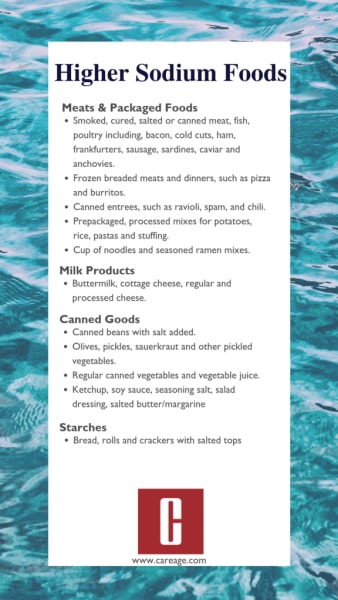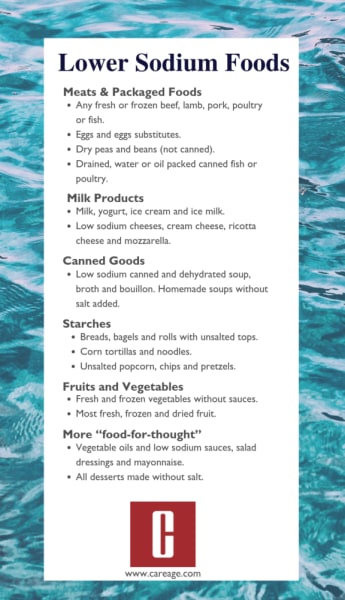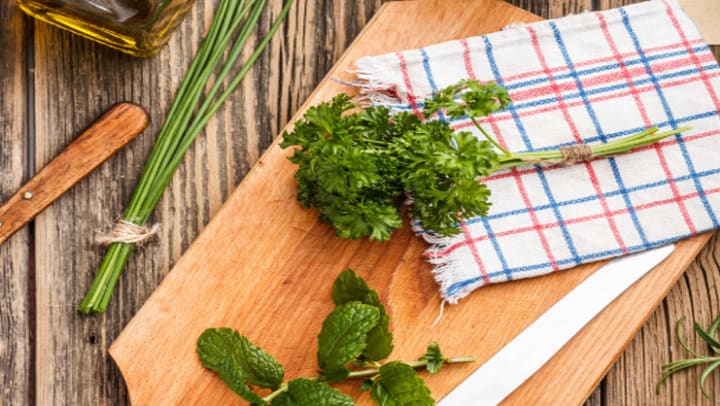We know that salt is bad for our health—the more you eat, the more water you retain, which raises blood pressure. The higher your blood pressure, the more strain on your heart, kidneys, arteries, and brain. All that strain can lead to stroke, heart attack, dementia, and kidney disease.
While you might make the effort to take the salt shaker off the table, that’s not all you can do to lower your salt intake without sacrificing delicious flavor.
Food labels are important!
We tend to get most of our excess sodium from processed foods. You might think snacks like pretzels, nuts, or chips are the main culprit, but a lot of other common items also pack a salt-filled punch. A helpful guideline when reading food labels is that low sodium is defined as a product having 140mg of sodium (or less) PER serving. Also, foods that have 400mg or MORE of sodium are considered HIGH sodium.
Almost all pre-packaged meals, frozen dinners, canned soups, and sauces contain a generous amount of sodium. Deli meats and even fresh chicken can have added salt. Foods also don’t have to taste salty to contain an unhealthy level of sodium, which is why it’s important to read food labels. In March, we broke one down so you could better understand what to look for.


1. Gourmet salts don't count as healthy alternatives
That pretty pink Himalayan salt that’s become so popular is still salt. It, and other gourmet salts like gray sea salt, fleur de sel, smoked salt, and Hawaiian salt, as well as salted seasonings like onion salt or celery salt, are just as bad for you as plain white table salt.
Don’t be fooled by appearances—your body digests all salts the same way! Gourmet salts are just as likely to damage your blood vessels.
2. Add more natural flavors
There are other ways to get good, natural kicks of flavor. If a recipe calls for one teaspoon of a particular spice or herb, such as basil in marinara sauce, try doubling it. You can also consider chopping and adding fresh herbs, which will add both flavor and texture to your food.
3. Lose your salt shaker
Whether at the table or next to your stove, remove the salt shaker. It’s probably out-of-habit that you sprinkle salt on your food, either while cooking or eating. If you remove the temptation, you’ll gradually replace flavor for salt, by adding things like herbs, citrus, garlic, ginger, vinegar, and pepper.
4. While you're at it, try something new
As you increase the amount of spices and herbs to recipes of vegetables and fish, try also adding some lemon or lime juice or zest. Squeezing a bit of fresh juice over a savory dish or adding the colored part of the peel (the zest) is a much more nuanced approach that gently balances other flavors while releasing the aroma of a freshly-peeled lemon or lime.
5. Give it time
The American Heart Association says, “At first, you may miss the taste of salt. Gradually, however, you will start to taste more of the natural flavors of foods.” People who have been on a low-sodium diet for a long time often find that processed foods they once liked are now “way too salty.”
At Mission Healthcare, and throughout our Careage family, our culinary team is here to help you as you recover from surgery or a hospital stay. We believe that food can be both healthy and delicious! While you stay with us, we will work with you, preparing your individual meals to help you gain strength and recover quickly.
If you live in King County, Mission Healthcare has two locations to serve you, in Bellevue and Renton. If you need Careage to come to you, Careage Home Health spans from King to South Thurston County; reaching just about every community in the Puget Sound. And, if you’re considering a change in lifestyle options so that you can maintain your independence without sacrificing your safety and quality of life, our Careage family of communities can help, also, including Patriots Glen, in Bellevue’s Lake Hills neighborhood, Patriots Landing in DuPont, WA, and The Lakes at Banning, CA.



